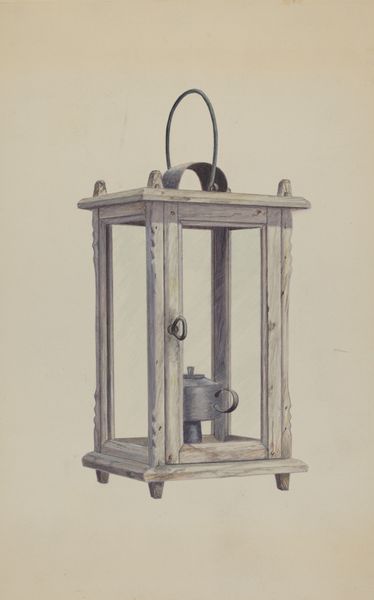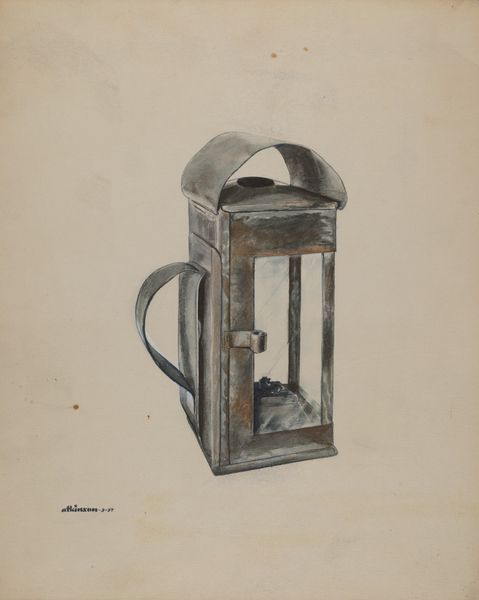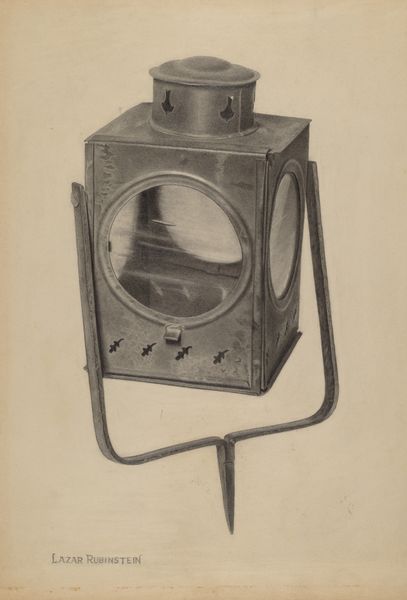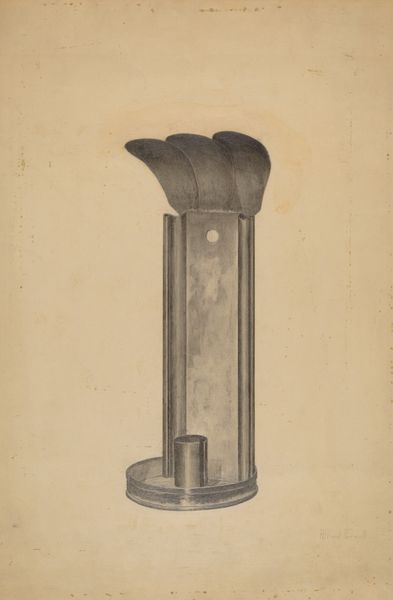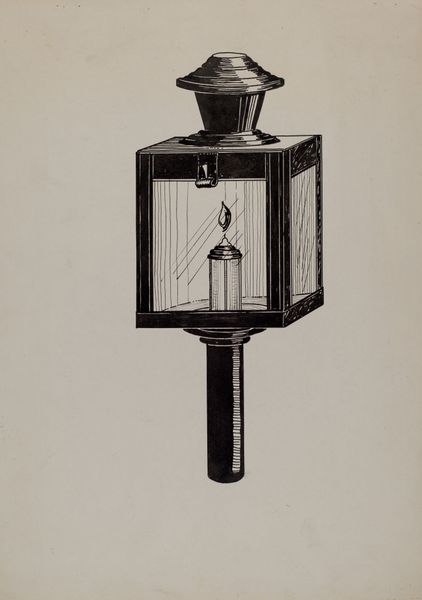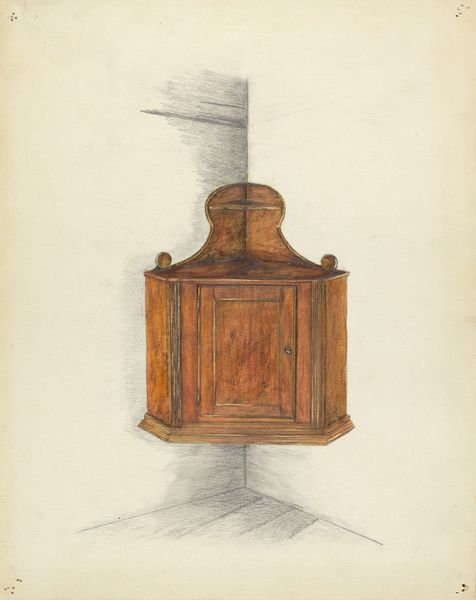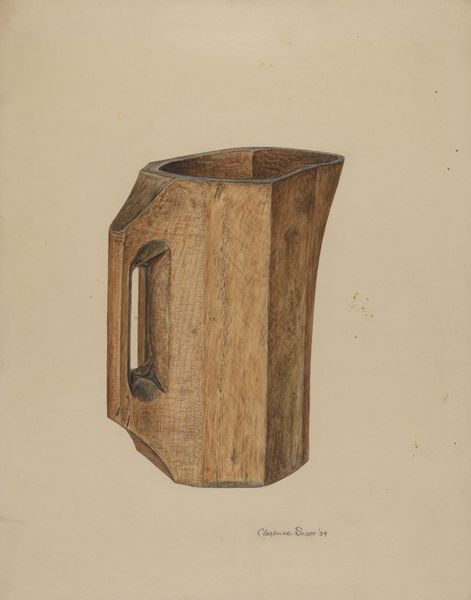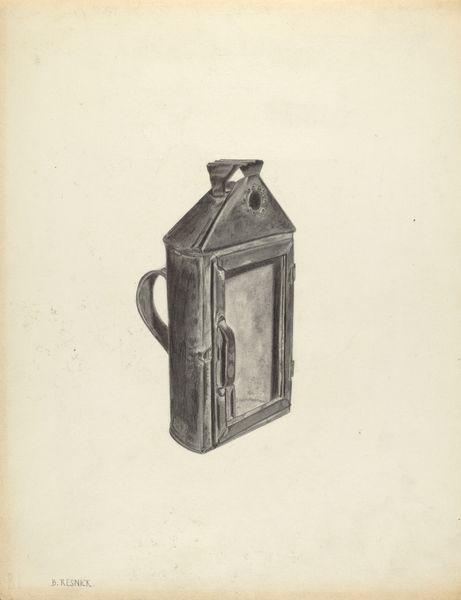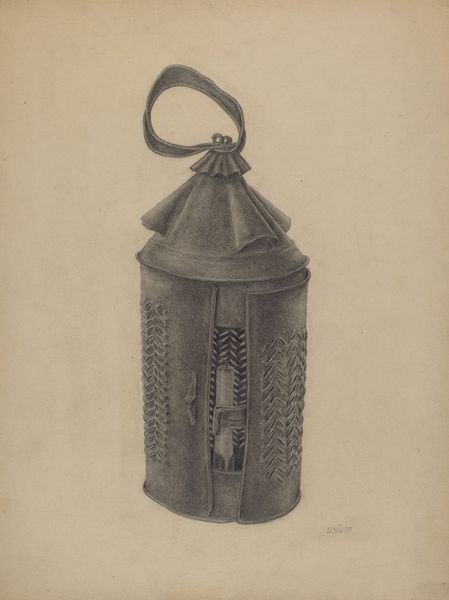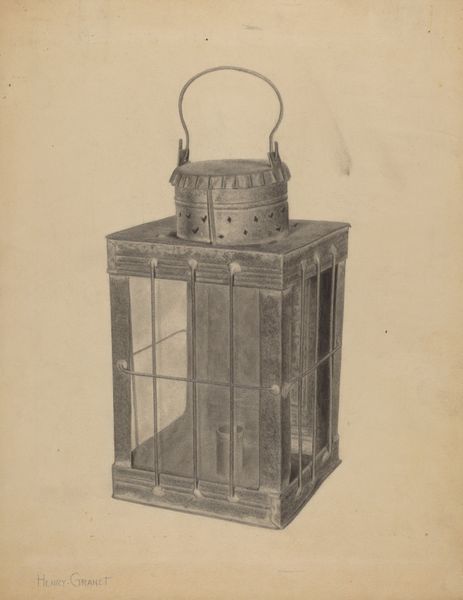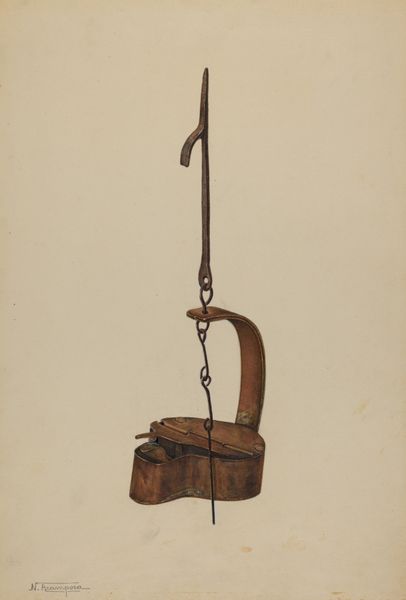
drawing, pencil
#
drawing
#
pencil drawing
#
pencil
#
realism
Dimensions: overall: 35.9 x 27.9 cm (14 1/8 x 11 in.) Original IAD Object: 14 1/4" high; 7 1/4" wide; 4 3/8" deep
Copyright: National Gallery of Art: CC0 1.0
Curator: So, what catches your eye first about this drawing? It’s called “Hand Lantern” by Samuel W. Ford, dating from around 1938. Rendered in pencil, its realism has this incredible, almost ghostly presence. Editor: Ghostly is a perfect word for it. There's something haunting about its simplicity. Like a memory of a bygone era, captured in delicate pencil strokes. It feels strangely intimate for such a utilitarian object. Curator: It does, doesn't it? Ford clearly wasn't aiming for mere representation. These objects are not often depicted; they’re normally props of the working class. By focusing on its form, it almost elevates the ordinary—in its almost mundane details – what strikes me the most is that he depicts an object destined to vanish itself. What statement does that make? Editor: Perhaps he's highlighting the beauty inherent in functionality, and, inevitably, things destined to erode or go away entirely—there's a melancholic dignity in that, isn't there? It’s a nod to resilience; these objects represent not just tools but a whole stratum of human endeavour – manual work that often remains unseen. Ford chooses to give it the main stage. Curator: Absolutely. It makes you think about the unseen lives connected to this humble lamp. It's so precise, the rendering, but at the same time evokes the feeling of history—there’s a narrative embedded in its stillness. Editor: It almost feels like a silent tribute to the disappearing practices of manual trades and their instruments, now becoming archaic memories and symbols. I wonder, did the artist choose the hand lantern to immortalize their existence? Curator: That’s precisely it. It reminds us of the labor required before our modern tools. It makes me reconsider everyday tasks. Editor: Indeed, art makes us think; now that I stop and admire, what simple thing can become the main subject? I have to thank Samuel W. Ford, this really enlightened the object. Curator: Couldn’t have said it better myself. It shines an unseen light on an ordinary object to find its glow, destined to keep burning even without the aid of light, just the touch of memory and craftsmanship.
Comments
No comments
Be the first to comment and join the conversation on the ultimate creative platform.
